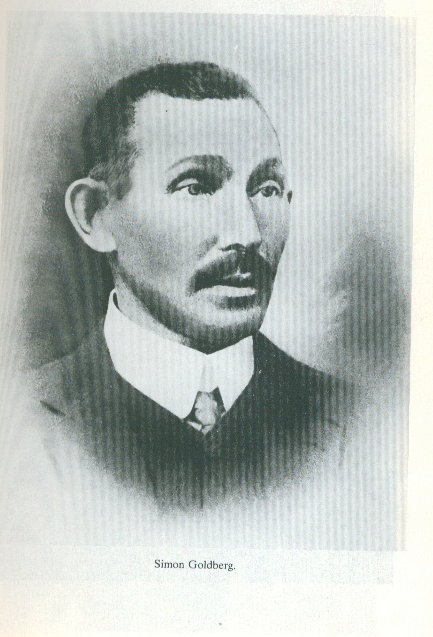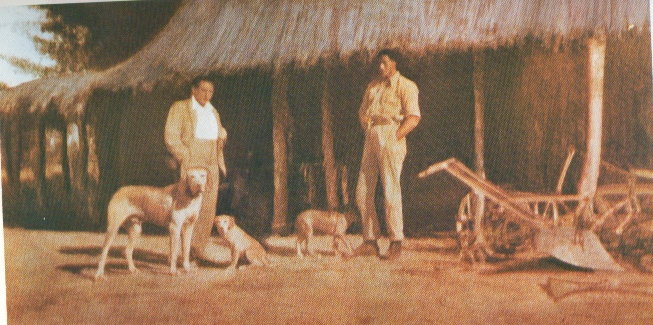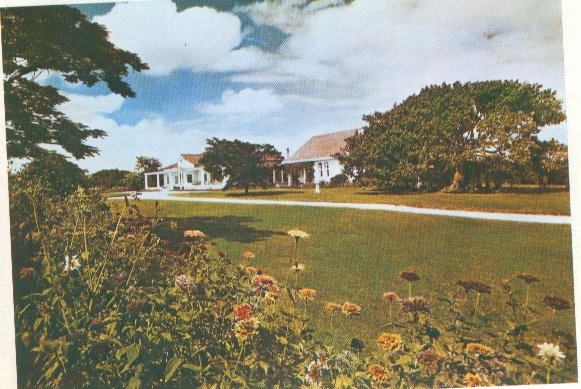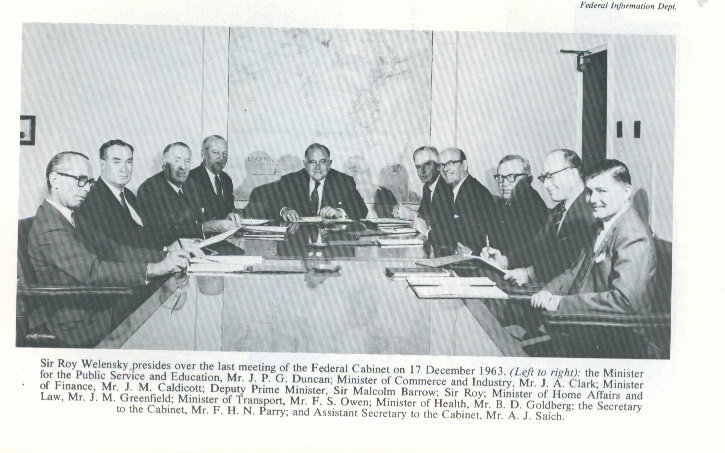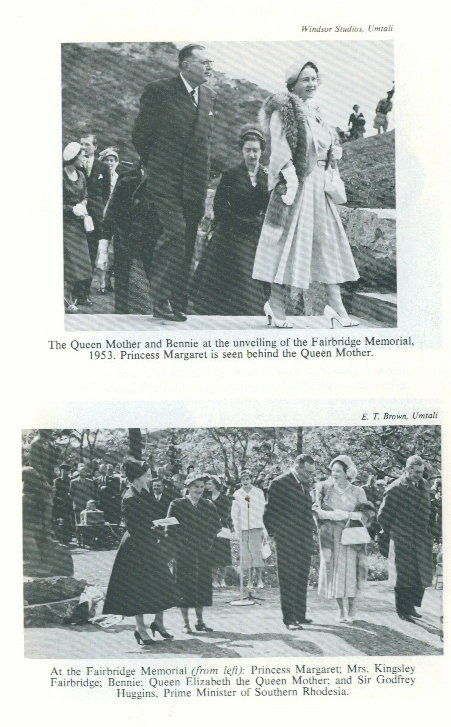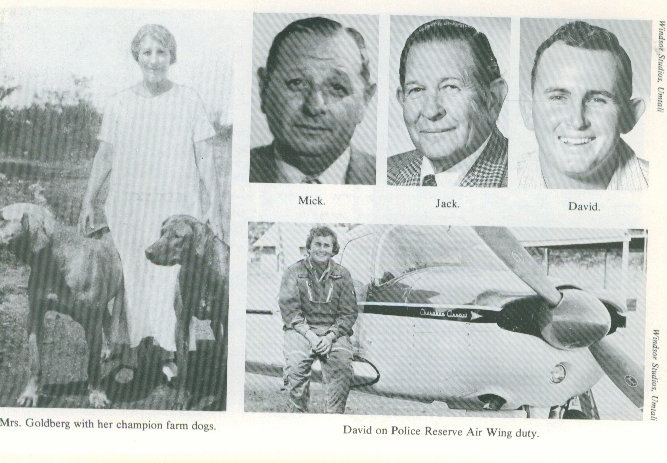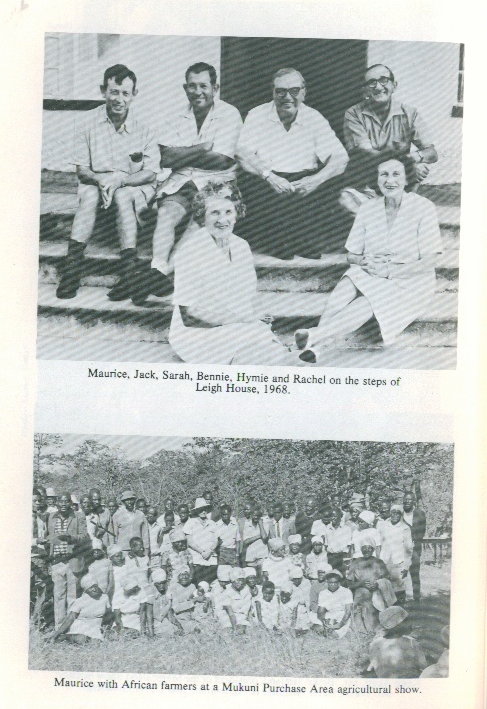Goldberg family of Odzi in the Eastern Highlands
This text is from Chapter 1 of a book called The Goldbergs of Leigh Ranch written by W.E.Arnold and published by BOOKS OF ZIMBABWE in 1980. Pictures from the same book can be seen here.
There will never be another farming family in Rhodesia like the Goldbergs,” said an old friend. They were uniquely the product of days that are gone for ever. Their main Achievements were in a country largely undeveloped at the time their arrival, but in which faith in the future, hard work, and dedication to the land outweighed almost any consideration.
It may be that with their singular blend of qualities, they fortunate to settle in a country where enterprise, initiative and perseverance could reap a rich return, but they earned their success the hard way. The family arrived in what was then Southern Rhodesia in 1912, just over twenty years after Cecil Rhodes’s Pioneer Column from the Cape Colony had established the first white settlement between the Limpopo and Zambezi rivers.
This was a raw young country with, as it later transpired, great potentialities, with a small population, and only rudimentary amenities. But it offered scope for people with energy drive.
The. Goldberg family had come to southern Africa from Dublin in Ireland soon after the turn of the century, and first settled in Cape Town where the three younger children were born. The father, Simon, landed at the Cape in 1901 followed the next year by his wife, Esther, and the four elder children. They were Michael born in 1894, Sarah bom in 1898, Rachel Born in 1900 and Benjamin born in 1902.
Simon Goldberg had originally migrated to Ireland from Riga in Latvia and had gone into business in Dublin. Esther was the daughter of Rabbi A. Levy and Mrs. Sarah Levy who lived in Warsaw. The Rabbi was the sole survivor of a family which had been destroyed by Cossacks. The family moved from Warsaw to London in 1886. It was during a visit to an uncle in Dublin that Esther met Simon Goldberg whom she married in 1891.
Simon was not satisfied with business prospects in Dublin so he decided to leave for Africa in 1901. His wife followed the next year after the birth of her fourth child.
Mrs. Goldberg had many memories of life in Dublin and used to tell her children of a visit to that town made by Queen Victoria whom she saw driving in Phoenix Park, and of the bitter quarrels between the politicians about’ the future of Ireland. Simon Goldberg was one of those men for whom pioneering life in new countries had an irresistible attraction. He did not stay long in Cape Town, but went to what was then German South West Africa. The family joined him after some months, but a year later Mrs. Goldberg became very ill and returned to Cape Town with the younger children, Mick staying in South West with his father. Three more children were born in Cape Town, Hyman in 1904, Maurice in 1906 and Jack in 1911.
There is a memory in the family of Simon showing the children a little bottle filled with diamonds. At that time they were living in Luderitzbucht and the diamonds had been found a few miles away at a place called Kolman’s Kop. The finding of the diamonds caused great excitement but this faded when no more were discovered.
Simon Goldberg did not care for South West, a harsh, desert country, so he returned to Cape Town. But Cape Town was an old, settled city going back to the seventeenth century and he had heard optimistic reports of the prospects in Rhodesia. So in 1911 at the age of forty-four, he set out for Rhodesia with Mick and in 1912 Esther, now thirty-eight, followed with six of her children.
They went to Salisbury, the capital, which had a population of about 3000 Europeans and 8000 Africans. The total population of the country was not much more than three-quarters of a million of whom the whites numbered less than 24000. The largest town was then Bulawayo with about twice the white population of Salisbury. It owed its predominance to being the headquarters of the railway system serving both Southern and Northern Rhodesia and thus being the main distribution centre.
Progress in Rhodesia at this time had not been remarkable. Hopes of a new Rand had faded, although gold and other minerals had been discovered and were being mined, but on a relatively small scale. The agricultural industry was still in its infancy; cattle were being raised, maize and other crops were being grown in fair quantities and experiments had been made in growing tobacco. There was no manufacturing industry and commercial activity was unspectacular. But the towns were taking shape, the rail pattern had been established, and the climate, apart from lower-lying areas subject to malaria and
black-water fever, was pleasant and healthy.
But most of all, Rhodesia could offer space — space to grow, to create new towns, to prospect for mineral wealth, to build a new nation. This was the lodestar which drew the Goldberg clan on to ever greater efforts during the sixty-odd which followed.
While the family settled in a large, rambling house in Victoria Street, Simon Goldberg ran a store at Norton about twenty mites from Salisbury. He loved the countryside and soon Added a 3 000-acre farm to his store. The farm was leased from the Government for a small annual rental. He had a buggy drawn by two fine mules in which he used to come to Salisbury to.visit the family, travelling at a cracking pace.
Of the children, only Mick the eldest was old enough to go to work. He joined a firm of wholesale merchants and, although be was only seventeen, he soon made his mark in business as he was able and conscientious.
Life in Salisbury was simple. Most people rode bicycles or to walk to get about and there were few amusements. But if life was simple it was happy and this can in great measure be to the influence of the mother. Esther Goldberg was always the focus of the family loyalties, the archetype of the Jewish matriarch.
A woman of calm beauty and exquisite manners, she was (he final arbiter of her exuberant, enthusiastic and sometimes
strident family. For much of her life she had to live in humble dwellings although in her later years the family was able to build homes worthy her other qualities of mind and heart. But whatever the environment, whether a pioneer-type house in early Salisbury, a simple farmhouse or a mansion, wherever Esther Goldberg lived there was an aura of culture and cultivation. She enjoyed nothing more than .to preside over a well-appointed table surrounded by her large family and their friends, the personification of true hospitality.
Her influence on her family was paramount from the very beginning of their stay in Rhodesia and was responsible in no small degree for what they achieved in the years ahead.
